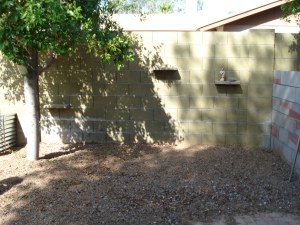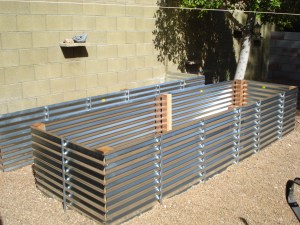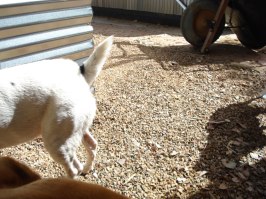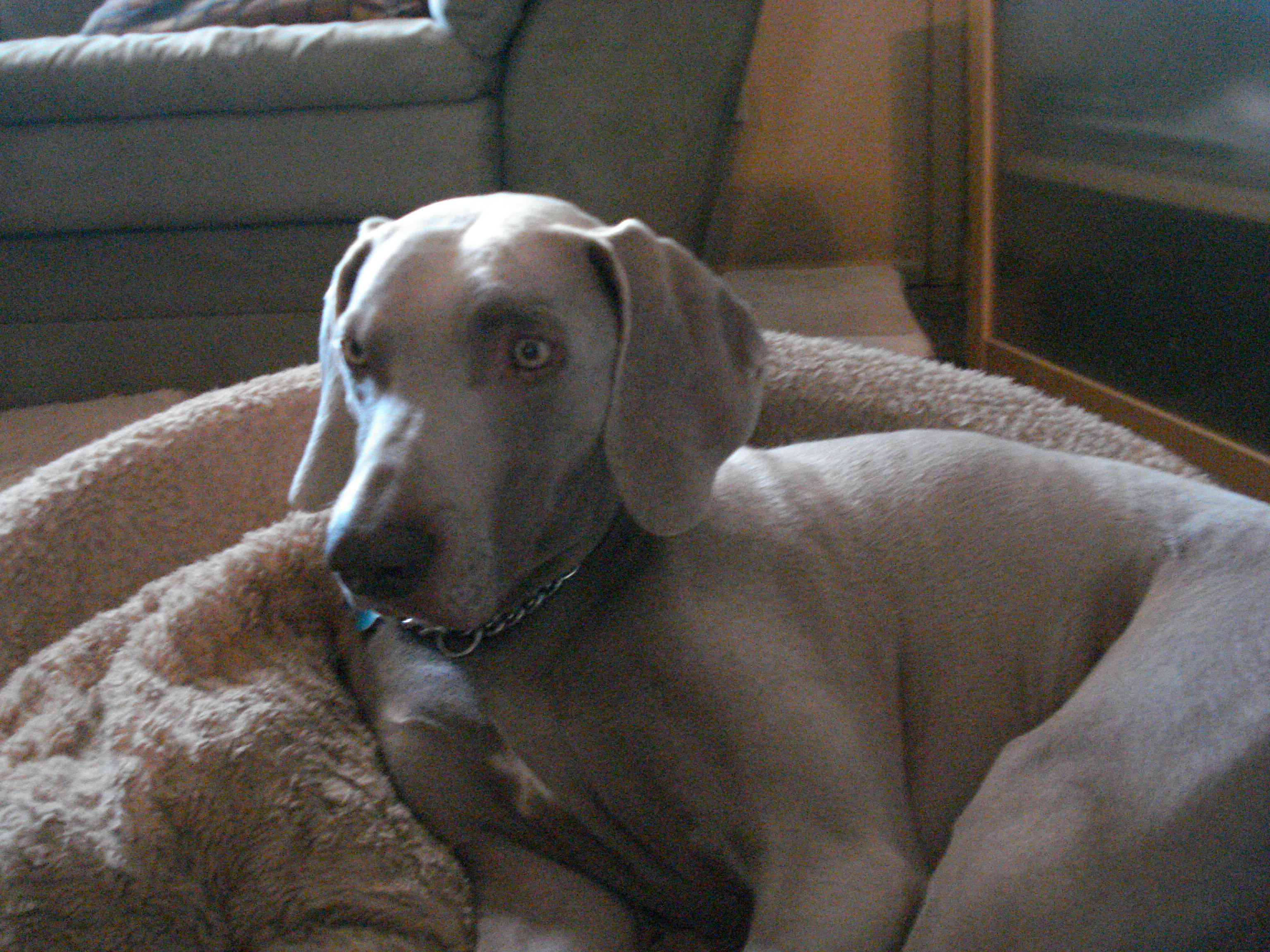In an effort to be more sustainable in the desert, we removed the grass that covered our front and back yards a couple of years ago. We covered the remaining clay soil with rock and xeriscaped. Many of our plants and trees are on drip lines under the rock to minimize evaporative losses. In doing this, we save an immense amount of water every month.
After much discussion, we decided to build raised garden beds in the west side of our back yard. The west side of the yard was selected because there is a concrete block wall on this side that will shade the beds from the harsh afternoon sun. Raising the beds accomplishes two things. We can fill the planters with good compost. The second really important factor is all but maybe one of our four-legged critters will be kept out of the beds on their ever-continual quest for lizards.
This is the area we set aside for our raised garden beds.
The area is large enough for four 3′ wide x 11′ long x 2′ high raised garden beds, 2 to the south side of the ficus tree and 2 to the north. To start this adventure, we built the 2 beds on the south side of the tree.







These are looking really good. Stylish too.
Thanks for the idea! I am thinking of using similar materials up here in the wet-coast (Humboldt County, CA).
these are so great – we just put in one of our own (1/2 the height, 20ft long x 5ft wide) – thanks for the inspiration!!
No need to worry about metals leaching into the soil? Love the look and cost but is there any scientific info on this?
good question! i have not read anything about this. If you find something, please let us know.
I like the look. I was thinking of doing the same with some panels left from some old barns. I just don’t want them to be so tall.
We started our beds off tall, foolishly thinking it would keep the Jack Russels out. Since we have to fence off everything to keep the dogs out, our more recent beds are about half the size.
hi just wondering does the soil gets really hot from the iron, raised beds look great, great for a bad back too
It’s hard to say whether the soil is hotter in the beds or not since our summer temps hover around 100-120 degrees in the summer days and stay well above 80 degrees at night. During the summer we have the water system set to run twice a day, once in the early morning, and once in the afternoon. Many of our first plantings did not survive, but that had more to do with not have the soil mix right (way too much clay in our soil). We are now in our third year, and most everything is thriving.